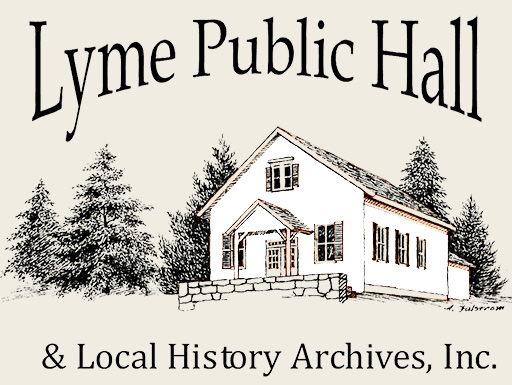
The recent news of Ebola and measles epidemics raises the question of whether a quarantine has ever been implemented in Lyme to prevent the spread of contagious disease through isolation or confinement of contagious individuals. The answer is “Yes”. There has been no shortage of contagious disease in the history of Lyme during the colonial time—small pox, diphtheria, measles, whooping cough, yellow fever, and consumption (TB), some outbreaks of which have reached near or actual epidemic levels locally.
As early as 1711, the Connecticut General Court gave the selectmen of towns the power to isolate a person sick with a contagious disease in a separate house to slow the spread of disease to others. There are stories of ”pest houses” in Lyme where ill individuals were isolated until they recovered or were left to die. The exact locations of the “pest houses” in Lyme and perhaps graves of those who died in them have not been identified although they are logically thought to be isolated at the far edges of inhabited or frequented areas.
In the late 18th and early 19th centuries, some experimental immunization of individuals with live cow pox virus was being done. Physicians like Dr. Vine Utley (East Lyme) and Dr. Elisha Ely (Saybrook) were active in the experimentation with demonstrated success in some of their approaches. But the idea was not yet widely accepted by the public and even resisted by many. The small pox epidemic in 1774-76 in Lyme is a case in point, the disease almost wiping out the Sterling family in the Sterling City and Reed’s Landing area of Lyme.
In the 19th century, national, state and local governments took on more responsibility for protecting the public’s health. In 1888, the Connecticut legislature ruled that a town board of health could order the confinement of an individual, reasonably thought to be infected with a contagious disease, for as long as the board thought necessary. Lyme’s Health Officers, Dr. Josiah G. Ely and later his son, Julian G. Ely who succeeded him, used their authority to impose a quarantine as needed in order to limit the spread of disease in the community and schools.
Lyme Health Officer, Dr. Josiah G. Ely, wrote in his report for the 1907 Lyme Annual Town Report, “There seems to be a growing tendency on the part of all classes to conform to the present methods of controlling the spread of contagious and infectious diseases. The person from an infected locality is no longer welcome nor do people rush into contagion as formerly.”
In Lyme’s 1908 Annual Town Report, Dr. Josiah G. Ely reported that “…the thing of most interest to the townspeople was the presence of scarlet fever. The source of the contagion was at first unknown but at a later date cleared up; a rigid quarantine, a thorough disinfection of infected and suspected places, the temporary closing of schools and churches and preventing public gatherings resulted in the stamping out of this epidemic absolutely.”
The world-wide influenza epidemic during World War I touched Lyme under interesting circumstances. Dr. Ely wrote in the 1920 Town Report: “Of most interest was the extensive prevalence of influenza. Owing to the snow blockade at the time only comparatively few cases could receive medical treatment. The number reported was 65, [while the] not reported probably are towards 150.” No quarantine was issued.
*****************************************
